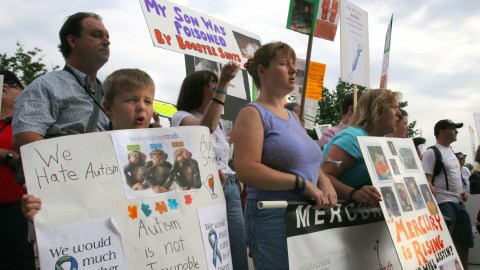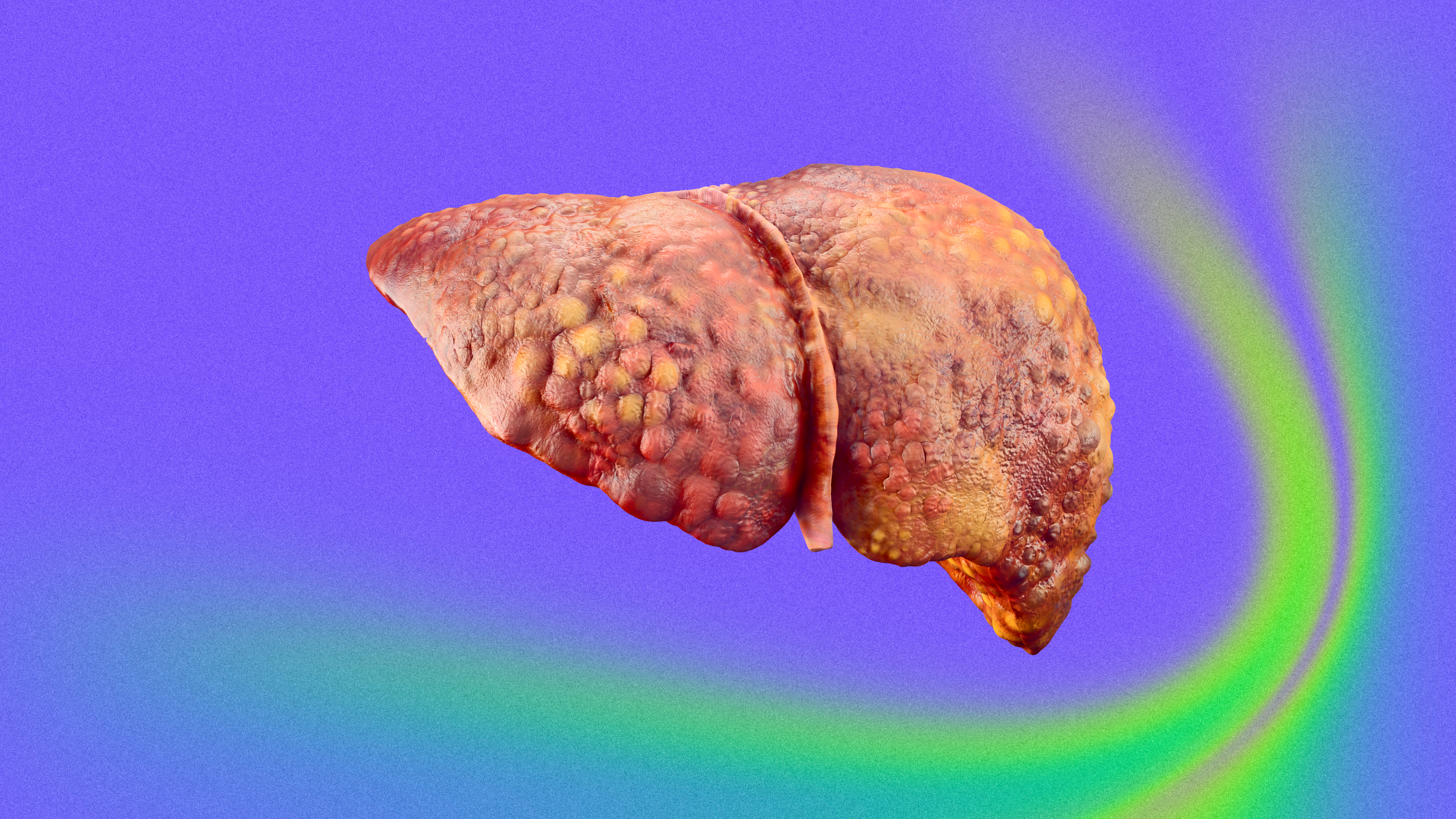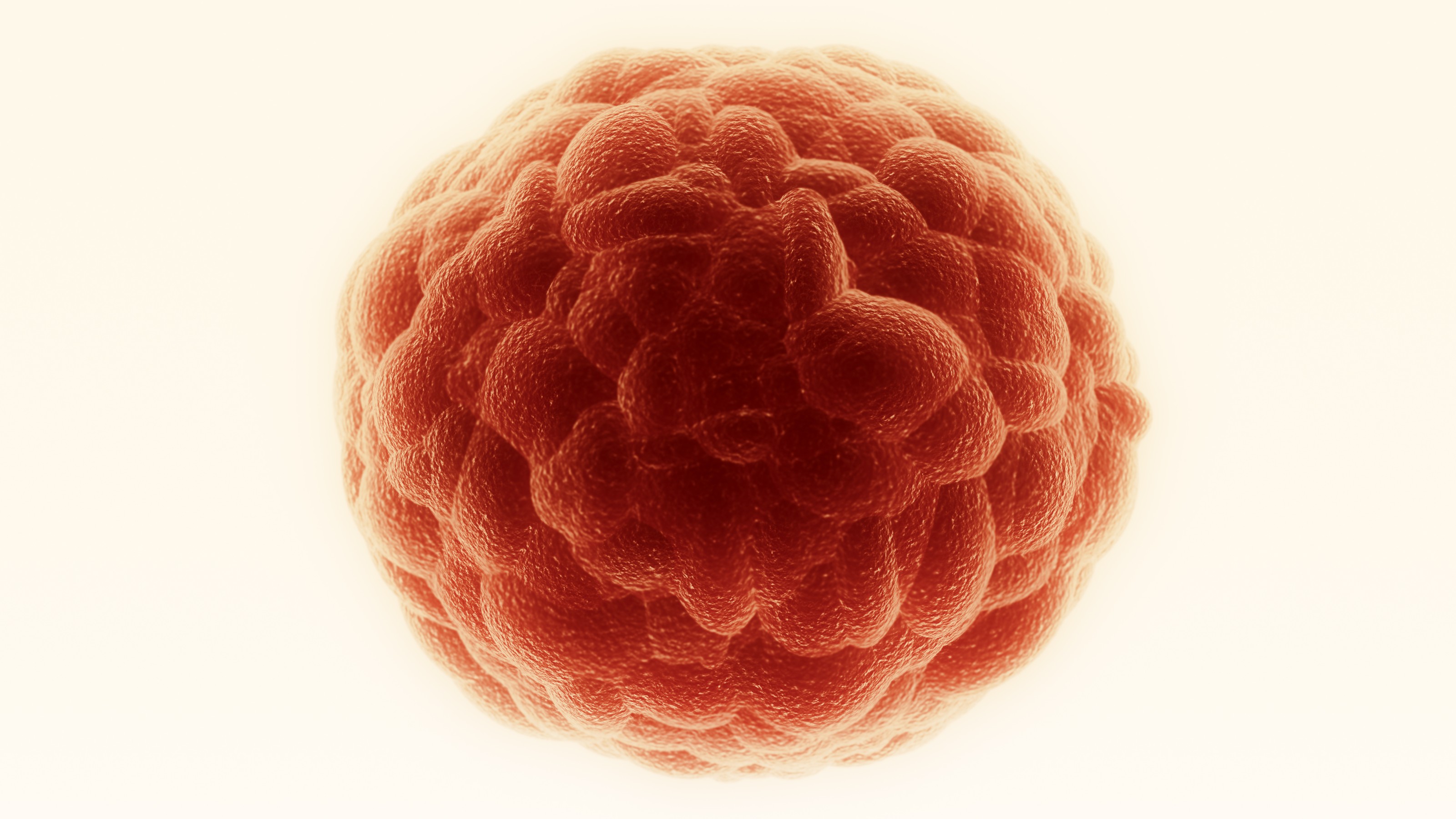What’s powering the anti-vaccine movement? ‘Hysteresis.’

Demonstrators carry signs against the use of mercury in vaccines in front of the Department of Health and Human Services building in Washington 20 July 2005. (Photo: NICHOLAS KAMM/AFP/Getty Images)
- A new study explores society's relatively poor vaccination coverage through the lens of hysteresis, a phenomenon that describes how systems are dependent on their history.
- The results show how 'imperfect vaccines' and episodes of public confusion can result in sharp drops in population-wide immunization rates, and how it can take years for those rates to recover.
- By promoting an individual's choice to get vaccinated as an altruistic behavior, societies might be able to reach vaccination goals sooner, the researchers suggested.
At least 160 people in New York state have been diagnosed with measles — an entirely preventable viral disease — since September 2018, officials announced this week. It’s the state’s second-largest outbreak in recent history, though, sadly, it’s also just one of many outbreaks of preventable diseases that have emerged recently in developed nations.
Who’s to blame? Is it Andrew Wakefield, the disgraced British doctor who in 1998 published a fraudulent paper attempting to link the measles, mumps and rubella (MMR) vaccine to autism and bowel disease? Is it mothers-against-vaccines groups?
A new study, published in the journal Proceedings of the Royal Society B, suggests one major culprit is a phenomenon called hysteresis.
In simple terms, hysteresis describes how a system is dependent on its history, and how the impacts of a force can persist even after the initial force is changed, or eliminated. This phenomenon explains why, as Science Daily notes, unemployment rates can remain high in a recovering economy, or why physical objects resist returning to their original state after being acted upon by an outside force.
Applied to vaccination coverage, it seems to explain why past problems with vaccination — say, questionable efficacy or public confusion over the science — can cause society to get stuck in a “hysteresis loop” that prevents it from reaching optimal vaccination coverage — even though those past problems might not exist today.
“Once people question the safety or effectiveness of a vaccine, it can be very difficult to get them to move beyond those negative associations. Hysteresis is a powerful force that is difficult to break at a societal level,” said Fu, who led the research team.
The study is the first to show that hysteresis can impact public health by causing lag in society’s “vaccination trajectory”, or the trend of vaccination coverage over time.
“Given all the benefits of vaccination, it’s been a struggle to understand why vaccination rates can remain stubbornly low,” Fu told Science Daily. “History matters, and we now know that hysteresis is part of the answer.”
An outsized disruption
One historical example cited in the study is the controversy that surrounded the whole-cell pertussis vaccine in England and Wales in 1978. At the time, much of the public was concerned that the vaccine caused permanent brain injury, even though overwhelming evidence showed that death or injury resulting from the vaccine was extremely rare, while rates of death from the disease were much higher. It took almost 15 years for the society to recover its vaccination rate, a feat that should have taken only one year.
The effects of hysteresis means that a public panic can have an disproportionate disruption on society’s vaccination trajectory.
“Vaccination levels in a population can drop quickly, but, because of hysteresis, the recovery in that same population can take many years,” study author Xingru Chen told Science Daily.
In addition to public panic, the efficacy of vaccines also seems to play a role in the effects of hysteresis. The study suggests that less effective vaccines, such as the flu vaccine — which the Center for Disease Control and Prevention says prevents the risk of flu by between 40 and 60 percent — will need to reach higher efficacy levels before society begins adopting them at optimal levels.
The researchers concluded by suggesting that policies that promote an individual’s decision to get vaccinated as an altruistic behavior could help society overcome the harmful effects of hysteresis and achieve herd immunity, the level of immunization that needs to occur in a population in order to prevent the spread of a contagious disease.
“Our work offers a novel mechanistic explanation for the slow recovery of vaccine uptake, as hysteresis effect can appear as an unprecedented roadblock to efforts for boosting vaccination rates,” the research wrote. “Nevertheless, as vaccination dilemma is just one example of real-world human cooperation problems, well-studied mechanisms for promoting altruistic behavior can be leveraged to overcome such hysteresis effect and thus improve vaccine compliance.”
You can take a closer look at the mathematics involved in the study by visiting the journal Proceedings of the Royal Society B.





